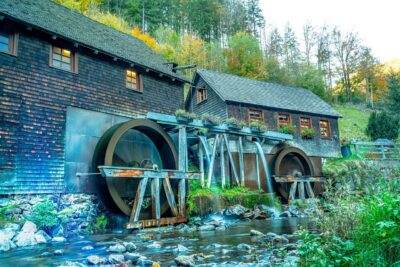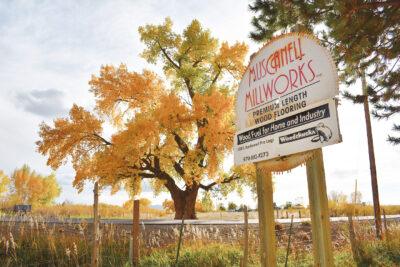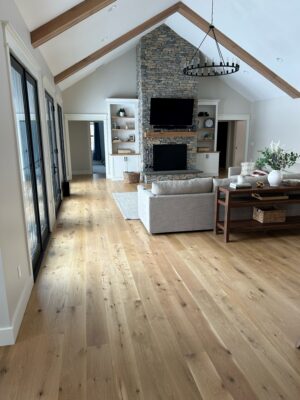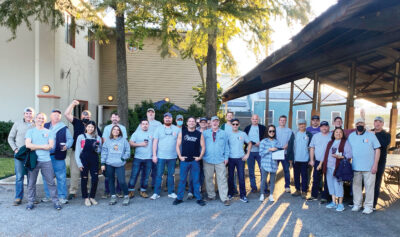We are at the end of the year. We are also at the end of the first contract with Magnolia Network for the RAHC. We need a minimum of $1.4 million to keep it going for 2024. All our efforts last year only raised $700,000. Different companies from all sizes across the industry have stepped up to contribute. Still, we have only received donations from 200 unique companies in an industry with over 2,000 Hardwood lumber sawmills, concentration yards, distributors, and users. With less than 10 percent of the sector contributing, the RAHC will not be able to achieve its financial goals. Therefore, it cannot maintain its significant relationship with Magnolia and will lose all momentum and trust with them and Canvas. The associations are trying to step up for one year and raise an additional $700,000 on top of the $240,000 they already donated to RAHC. Please help these associations’ efforts.
I have been the RAHC fundraising task force chair for a year now. I met with a task force member six months ago, and he asked me how it was going. I told him I was talking with two association executives and asking them to join the RAHC. The executive directors were interested but hesitant about the cost. I suggested they get their foot in the door by donating $5,000 and helping provide content and leadership. The $5,000 was not a significant cost to either but they needed board approval. To date, neither association has joined, but I fully expect it to happen.
He asked me another question. “Is it still going to be this way five years from now? Are we going to spend hours of work chasing after $5,000 from different organizations to fund RAHC?” I replied frankly, “It’s worse than that; we are going to spend hours and hours chasing after $100, $1,000 and promises to give from everyone, each year, trying to raise 3 million dollars and getting funds from the same few people and never get close to our goal.” That statement has proven true. Of the 700 companies who heard my RAHC rally cry at the NHLA convention, only 43 made donations, most of whom had already given, while all praised it and loved what we are doing.
Can we be honest? And say that voluntary funding will fail in funding the RAHC long term.
Can we also say that the other 30-60 associations affiliated with the Hardwood industry cannot fund RAHC long-term either? Why? Because they all have their mandates and programs beyond promotion that they need to keep doing, and they are just as strapped for cash as the Hardwood mills. NHLA gives 5 percent of its dues to the RAHC, which is still less than $100,000 annually. If NHLA gave 50 percent, it would be less than $800,000, and I would have to lay off half of the staff. Only if everyone doubles their dues will it work for associations to fund RAHC.
Now what? We all want to keep it going. WHERE ARE WE GOING TO GET THE MONEY FOR RAHC? Yes, I yelled that. I have been talking about RAHC funding for a year and a half. Most people say they like the social media posts and the advertising. A few complain that it is not what they want, but even some complainers have donated. Everyone has had a chance to commit something. I have seen $100 checks and $75,000 checks. But what I have yet to see is everyone contributing something.
I PROPOSE WE SEND OUT A SURVEY. It sounds simple enough, but this is how it will go. The survey will only have one question.
1.How do you want to fund the RAHC long-term?
A. Voluntary contributions
B. Associations surcharge for membership dues
C. Grants
D. USDA research and promotion program (Checkoff)
E. Not at all
If you select A) Voluntary contributions, you will be sent to a screen that says donate $1,000 now to submit your answer (and it will take credit cards). It will also have a button to go back and change your answer. If you are unwilling to donate now, you must choose from the other options.
If you select B) Association surcharge for membership dues, you will be sent to a screen that says add $1,000 to your dues now to submit your answer (and it will take credit cards and have a list of associations you belong to). It will also have a button to go back and change your answer. If you are unwilling to donate now, you must choose from the other options.
If you select C) Grants, you will be sent to a screen that says matching funds are required for grant donations of $1,000 now to submit your answer (and it will take credit cards). It will also have a button to go back and change your answer. If you are unwilling to donate now, you must choose from the other options.
If you select D) USDA research and promotion program (Checkoff), you will be sent to a screen that says, Checkoff programs take years to create; donate $1,000 now to submit your answer (and it will take credit cards). It will also have a button to go back and change your answer. If you are unwilling to donate now, you must choose from the other options.
If you select E) Not at all, you will be sent to a screen that says, many others don’t feel the same way; please donate $1,000 now to support those who want it to continue. It will also have a button not willing to donate and end the survey.
Do you get the picture? Good then Why Knot Have The Hard Discussion About Long-Term Funding For RAHC?








